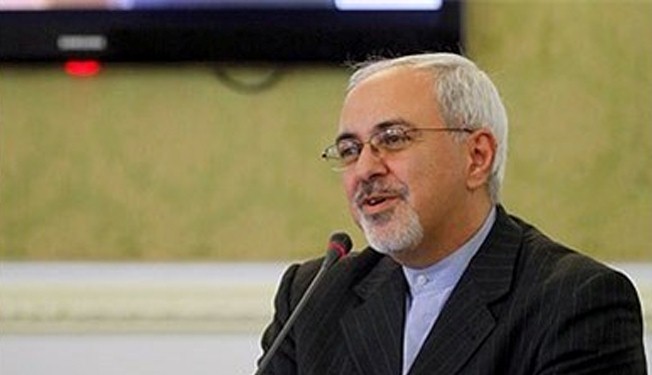June 20-2014

Iranian Foreign Minister Mohammad-Javad Zarif has taken to the pages of The Washington Post to argue that any nuclear deal must allow Iran to continue its nuclear program just as it is today.
Zarif reveals for the first time that in the previous talks under the Khatami Administration in 2005, the Big Six demanded that Iran conduct no enrichment for a decade, until 2015. That is a surprise since it was previously believed that the Bush Administration refused to accept any enrichment by Iran. And, in fact, many US critics of the Obama Administration assert that his willingness to allow some enrichment is a weak posture compared to George W. Bush’s opposition to any enrichment.
But in his article published Sunday, Zarif then argues that whatever Iran is doing now must be allowed to continue. “Nobody can rewind the clock,” he writes. “Sacrifices have been made. Capabilities are vastly different. Knowledge and expertise have been attained. None of this can be wished or negotiated away.” (See full text on page eight.)
That appears to be a demand that the Big Six agree to allow Iran to keep all the 20,000 centrifuges it has thus far installed—something the Big Six have all opposed.
In the article, Zarif says the Islamic Republic is willing to concede “extensive monitoring and verification arrangements.” That is all he offers to the Big Six, however.
“We will not abandon or make a mockery of our technological advances or our scientists,” he writes in another sentence that implies Iran will not give up any technological achievement it has so far reached.
Zarif assails what he calls the “myth” of breakout. He complains that a “small” group of people has “irrationally advanced the idea that Iran can produce enough fissile material for a bomb in months.” That is indeed the heart of the argument made in the United States for requiring that Iran cut back its enrichment program substantially.
But Zarif says that fails the test of logic. “If Iran ever wanted to break out, all IAEA inspectors would have to be expelled from the country,” Zarif writes. “Iran’s program would then have to be reconfigured to make weapons-grade fissile material, which would have to be converted to metal, be molded into the shape required for a bomb and undergo countless other complex weaponization processes. None of these capabilities exist in Iran and would have to be developed from scratch. This would take several years.”
The Western argument, however, has always been that the Islamic Republic could build all those capabilities in secret, then kick out the inspectors and rush in months to enrich enough uranium from 3.5 percent to weapons grade of 90 percent.
Zarif says the proof that Iran plans no such thing is that it didn’t do that in the last decade. Its critics say Iran was trying to develop all those weaponization capabilities until 2003, when the CIA says Iran put everything on hold just after the US overran Iraq and the Islamic Republic feared the same thing would happen to Iran.
But Zarif’s article does not address those points.
The main argument against the breakout fear has been that Iran’s expulsion of IAEA inspectors would prompt an instantaneous global response.



















